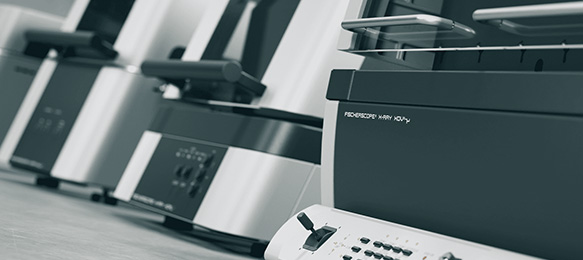Radiation Protection Requirements for use of Desktop XRF Analysers

X-Ray Fluorescence (XRF) is a non-destructive analytical technique used to determine the elemental composition of materials and can also be used to determine the thickness of coatings applied to a material. Desktop XRF Analysers contain a relatively low energy X-Ray Generator, which is a source of ionising radiation.
This article highlights key radiation protection requirements around use of Desktop XRF Analysers, which utilise a number of installed control measures to prevent exposure to ionising radiations. Their use must be in accordance with the requirements of the Ionising Radiations Regulations 2017 (IRR17), which is regulated (other than on nuclear sites) by the Health & Safety Executive (HSE).
For Employers utilising, or who plan to utilise, Desktop XRF Analysers the key requirements can be summarised as:
- Appoint and seek advice from a suitable Radiation Protection Adviser (RPA), who are specialists to help Employers with compliance to IRR17 including providing advice on the safe use of Desktop XRF Analysers (IRR17 Regulation 14) and the requirements for Training in radiation protection (IRR17 Regulation 15)
- Obtain from HSE a Registration Certificate for the practice of using an X-Ray Generator (IRR17 Regulation 6)
- Develop a suitable Radiation Risk Assessments(IRR17 Regulation 8) for the use of Desktop XRF Analyser taking into account the Installed Control Measures (IRR17 Regulation 9) which may include shielding, beam limitation/collimation, warning lights and interlocks fitted to the sample chamber together with a suitable System of Work
- The sample chamber will be shielded and depending upon accessibility to an operator’s hands may require designation as a Radiation Controlled Area (IRR17 Regulation 17) and be suitably labelled (IRR17 Regulation 19)
- The System of Work will include radiation protection training for operators (IRR17 Regulation 15) and a means of undertaking radiation monitoring (IRR17 Regulation 20). With the low-risk nature of the operation of Desktop XRF Analysers the radiation monitoring can be achieved by placement of a suitable dosimeter as a means of passive monitoring and also providing evidence of the dose to operators and others
- Where appropriate develop Local Rules, which are the main operating instructions intended to restrict any exposure in Radiation Controlled Areas, together with appointment of Radiation Protection Supervisors (RPS) to help the Employer ensure compliance to the Local Rules (IRR17 Regulation 18)
- Ensure that the analyser is subject to routine Pre-Use Safety Checks and then routine Examination, Maintenance and Testing, normally undertaken by the manufacturer (IRR17 Regulation 11)
L2 Business Consulting Limited is an HSE recognised RPA Body who can provide advice to Employers on the selection and safe use of Desktop XRF Analysers.